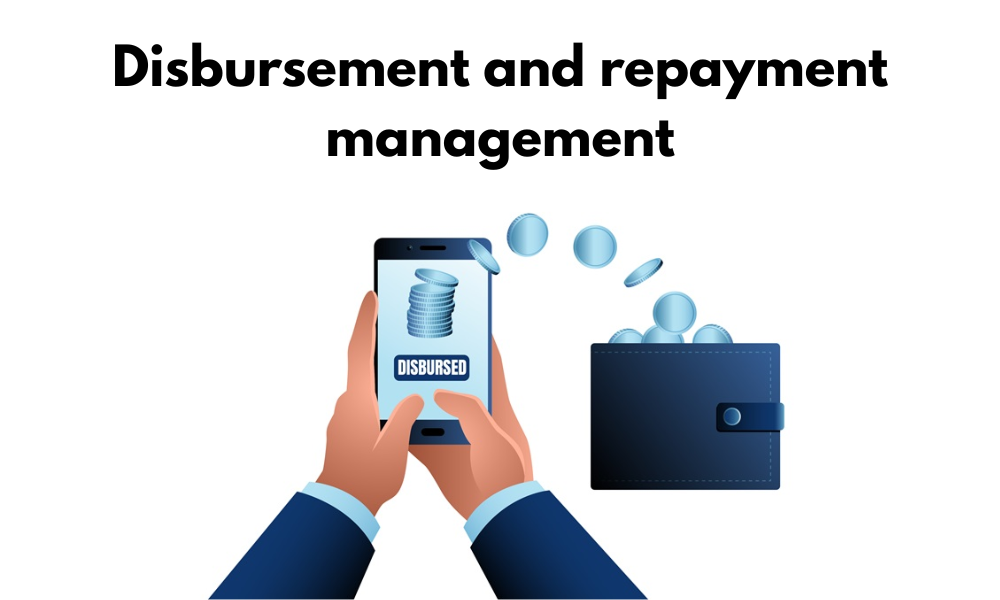
If you run a lending business, NBFC, fintech startup, or even offer in-house EMIs, choosing the right loan management software for your business can literally make or break your operations. The right platform saves hours of manual work, reduces errors, improves collections, and gives you full visibility across the loan lifecycle. On the other hand, the wrong system becomes a daily headache, full of workarounds, Excel patches, and compliance risks.
In this guide, you will learn exactly how to choose loan management software that fits your lending model, supports your growth, and delivers a smooth experience to both your team and your customers. We will cover key features to look for, questions to ask vendors, and practical tips to avoid costly mistakes.
What is loan management software?
Loan management software (LMS) is a platform that automates and manages the entire loan lifecycle, from onboarding and credit evaluation to disbursement, EMI tracking, collections, and closure. It replaces scattered spreadsheets and manual processes with a centralized system.
A modern LMS helps you:
- Create and manage different loan products (personal, business, gold, consumer durable, etc.).
- Automate interest calculations, repayment schedules, penalties, and charges.
- Track delinquencies, NPAs, and collection activities in real time.
- Maintain audit trails, logs, and compliance reports.
When you choose the right loan management software for your business, you get better control over risk, faster decision-making, and a more professional experience for your borrowers.
Why choosing the right LMS really matters

Many lenders think “software is software,” but loan management is not just billing and reminders. A good LMS becomes your operational backbone.
The right loan management system can:
- Improve operational efficiency by automating repetitive manual tasks.
- Reduce errors in interest, EMI, and penalty calculations.
- Shorten turnaround time from application to disbursal.
- Strengthen your compliance posture with accurate reports and audit-ready data.
- Support omnichannel lending (branch, agents, feet-on-street, apps, partners).
On the other hand, choosing the wrong loan management solution can lead to:
- Rigid workflows that don’t match your lending model.
- Poor integration with credit bureaus, KYC, accounting, or collection tools.
- Limited scalability when your loan book grows or you add new products.
- Extra hidden costs in customization, maintenance, or manual patchwork.
That is why it is critical to evaluate loan management software not just on price, but on long-term fit and value.
Step 1: Clearly define your lending model and needs
Before comparing vendors, get internal clarity. The best loan management system for a microfinance institution may not work for a consumer-durable financier or a digital-only BNPL provider.
Ask yourself:
- What types of loans do you offer? (secured/unsecured, short-term/long-term, retail/SME, etc.)
- What is your typical ticket size and volume?
- How do you source customers? (DSAs, branches, apps, web, partners)
- What does your current underwriting and approval process look like?
- How complex are your repayment structures? (EMI, bullet, step-up/step-down, daily/weekly collections)
Documenting this helps you choose loan management software that supports:
- Custom loan products and repayment schedules.
- Rule-based workflows and approval hierarchies.
- Different interest methods and fee structures.
The more precise you are about your lending workflows, the easier it is to reject “one-size-fits-all” tools that force you to change your business just to fit the software.
Step 2: Evaluate core features you actually need
Every vendor promises “end-to-end automation,” but you should prioritize features that directly support your business goals. When choosing the right loan management software for your business, look closely at these core capabilities:
Loan origination and onboarding
Check whether the LMS supports:
- Digital application forms (web, mobile, agent app).
- Document upload and management (Aadhaar, PAN, income proofs, agreements).
- Integration with KYC, bureau, and AML tools.
- Automated eligibility and rule-based screening.
If you work with field agents or channel partners, ensure the system supports lead assignment, agent logins, and real-time status tracking.
Underwriting, risk, and decisioning
A strong loan management platform should:
- Allow customizable risk rules and scorecards.
- Support manual and automated underwriting flows.
- Provide a clear view of customer profiles, past loans, and repayment history.
Even if you start with manual underwriting today, choosing a loan management system that can later integrate with scorecards and AI-based decision engines will future-proof your setup.

Disbursement and repayment management
This is where day-to-day efficiency shows. Look for:
- Flexible disbursement options (bank transfer, UPI, wallets, vendor payouts).
- Automated EMI schedules, interest computations, part-payments, and foreclosures.
- Support for auto-debit options like NACH, UPI AutoPay, e-mandates, cards, and payment links.
- Clear dashboards for DPD (days past due), overdue buckets, and NPA tracking.
If collections are a big part of your business, ensure the LMS supports bucket-wise allocation, follow-up workflows, and integration with calling/communication tools.
Step 3: Check integration and ecosystem compatibility
No loan management solution works in isolation. It needs to talk to the rest of your tech stack. When you choose the right loan management software for your business, integration is often the difference between a smooth operation and constant manual work.
Key systems to consider:
- Credit bureaus and KYC providers.
- Bank account verification, PAN/GST, and income verification services.
- Accounting/ERP software for posting entries and reconciliations.
- CRM, marketing, and communication tools (SMS, WhatsApp, email).
- Collection tools, payment gateways, and e-mandate platforms.
- Analytics or BI tools for deeper reporting.
Ask vendors:
- Do you offer ready APIs or pre-built integrations for these?
- How flexible is your API layer for custom workflows?
- What is the usual integration timeline and cost?
A loan management platform with strong API capabilities gives you the flexibility to add new partners, channels, and products as your business grows.
Step 4: Prioritize usability and team adoption
The best LMS is useless if your team finds it confusing. User experience is a major factor when choosing loan management software for everyday operations.
Evaluate:
- Is the interface clean, modern, and easy to navigate?
- Can relationship managers, collection agents, and back-office staff use it with minimal training?
- Are search, filters, and reports easy to access?
- Can you create role-based access for different teams and branches?
If possible, run a pilot or sandbox trial. Get feedback from people who will actually use the system—ops team, credit, accounts, and collections. Their input will surface practical issues that a high-level demo may hide.
Step 5: Look at scalability and performance
You are not just choosing loan management software for your business today; you are choosing it for the next 3–5 years.
Think about:
- Can the system handle a higher loan volume without slowing down?
- Does it support multi-branch, multi-location, or multi-entity setups?
- Is it cloud-based, on-premise, or hybrid?
- How easy is it to launch new loan products or modify existing ones?
A flexible, configurable loan management system allows you to:
- Experiment with new loan schemes and offers.
- Enter new geographies or segments.
- Add new distribution channels without rebuilding everything from scratch.
Step 6: Data security, compliance, and reporting
In lending, trust is everything. Your loan management software will hold sensitive customer data and financial information, so security and compliance cannot be an afterthought.
Assess:
- Data encryption, access controls, and activity logs.
- Backup policies and disaster recovery.
- Compliance with local regulations and industry standards.
- Built-in regulatory and management reports.
For regulated entities, the ability to generate audit-ready reports and maintain full trails of every change can save you time and risk during inspections.
Step 7: Vendor reliability, support, and pricing
Finally, you are not just choosing a product; you are choosing a long-term partner.
When shortlisting the right loan management software provider:
- Check their experience in lending and fintech.
- Understand which types of clients they currently serve (NBFCs, MFIs, banks, fintechs, etc.).
- Ask about onboarding timelines, training, and ongoing support.
- Clarify SLAs, support channels, and response times.
On pricing, look beyond the headline number. Evaluate:
- Implementation and setup fees.
- Per-user, per-loan, or per-branch pricing.
- Charges for integrations, customizations, or report building.
- Annual maintenance or upgrade costs.
Sometimes, a slightly higher-priced system with strong support and a robust roadmap ends up being more cost-effective than a cheap solution that slows you down.
Common mistakes to avoid
When choosing loan management software for your business, avoid these common pitfalls:
- Focusing only on initial cost and ignoring long-term value.
- Ignoring team feedback and choosing based only on management’s view.
- Selecting a rigid system that cannot adapt to your evolving lending model.
- Skipping integration and assuming manual workarounds will be “okay for now.”
- Neglecting security, compliance, and audit needs.
Avoiding these mistakes can save you from expensive migrations and operational disruptions later.
Conclusion: Take the next step toward smarter lending
Choosing the right loan management software for your business is one of the most strategic technology decisions you will make as a lender. The right LMS will streamline your loan lifecycle, improve collections, strengthen compliance, and give you the confidence to scale without losing control.
Start by mapping your lending workflows, defining your must-have features, and shortlisting vendors that align with your business model. Then, ask the hard questions about integrations, scalability, security, and support before you commit.
If you are serious about upgrading your lending operations, now is the time to explore modern loan management solutions, request demos, and involve your team in the selection process. The earlier you invest in the right system, the faster you can grow your loan book with fewer errors, better visibility, and happier customers.



